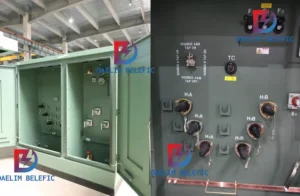
How to Choose Pad Mounted Transformer?
Table of Contents Selecting the right pad-mounted transformer requires careful consideration of several critical
ELECTRIC, WITH AN EDGE
In order to unify the design principles of low-voltage power cables of transformer for wind turbine and pad mounted transformer and to form a standardized design scheme, the article compares and analyzes the relevant design standards and regulations, and proposes the design scheme and calculation basis for the type, capacity and energy efficiency of distribution transformer, as well as the material, number and cross-sectional area of pad mounted transformer. The article composes and analyzes the relevant design standards and codes, proposes the design scheme and the basis of selection calculation for the type, capacity and energy efficiency of distribution transformer and the material, number of roots and cross-sectional area of low-voltage power cable of pad mounted transformer, verifies the reasonableness and applicability of the standard design scheme through engineering examples, and finally proposes the considerations for the selection of transformer for wind turbine.
Transformer for wind turbine, also called “unit transformer”, is mainly used to increase the outlet voltage of wind turbine, so that the power generated by wind turbine can be transmitted over long distances through the convergence line.
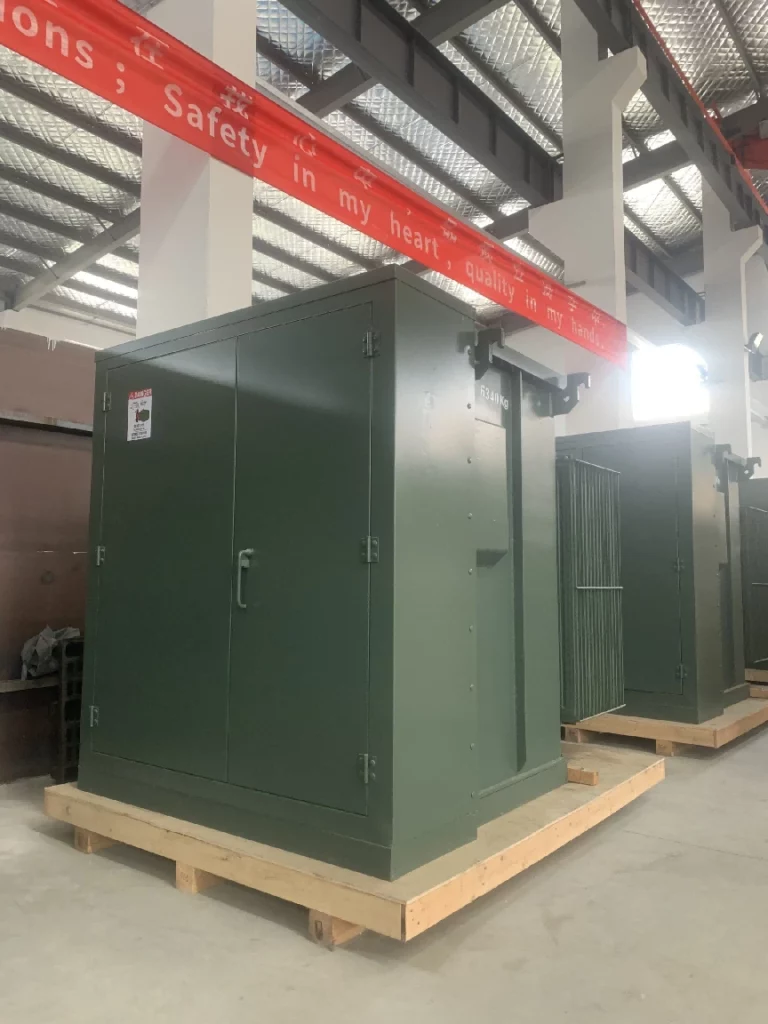
Transformer for wind turbine has more design solutions, some of which mainly consider the economy, the safety factor is low, and the quality of the equipment is worrying; some design solutions have high reliability requirements, and they just pursue more margin, which increases the one-time investment of the equipment. These problems are especially prominent in the design and selection of transformer for wind turbine and pad mounted transformer low-voltage side power cables. In order to ensure the safe and stable operation of pad mounted substation, and at the same time to be economical and reasonable, it is necessary to form a more suitable standard design according to the regulations and the actual working conditions in the scheme stage.
In this paper, we compare and study the design and selection of low-voltage power cables for pad mounted substation and pad mounted transformer, and propose a standard design solution.
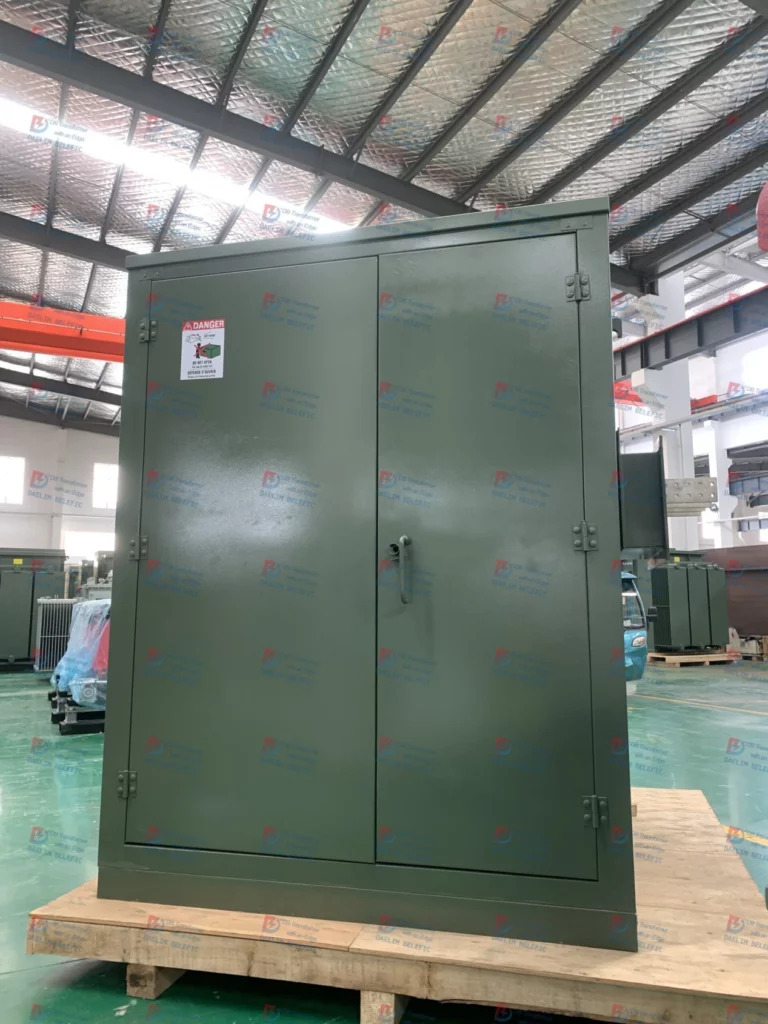
At present, the main types of transformer for a wind turbine are European box variable and Chinese box-type transformer, and there are also cases of pad mounted transformer for wind turbines with smaller power. The main differences between the three are listed in Table 1.
Item | European box variable | pad mounted transformer | chinese box-type transformer |
Draining and refuelling during maintenance | Not required | required | Not required |
System outages during maintenance | required | Not required | Not required |
Effects of high temperatures on power generation | yes | yes | No |
Oil contamination from switch action | No | yes | No |
Reduced power generation during system outages | yes | No | No |
Safety hazards of misoperation | yes | No | No |
Fan cooling of padmounted transformer | required | Not required | Not required |
Thermal protection of the case enclosure | yes | No | yes |
Weather effects of operational maintenance | No | yes | No |
use dry type transformer | yes | No | No |
Economic investments | High | relatively low | Moderate |
European box variable is equipped with high-voltage circuit breakers, with better overall performance, but with higher investment and larger size, suitable for projects with harsh environment, high requirements for appearance, environmental protection and fire protection; pad mounted transformer is less equipped, with worse overall performance, but with the lowest investment and smallest size. The early transformers for wind turbines mostly used the pad mounted transformer type; the english box-type transformer is equipped with high voltage circuit breakers, has better overall performance, moderate investment, moderate size and has obvious advantages in terms of technology and economy, and is currently the preferred choice for wind turbines. The Chinese box-type transformer is equipped with a high-voltage circuit breaker, which has excellent overall performance.
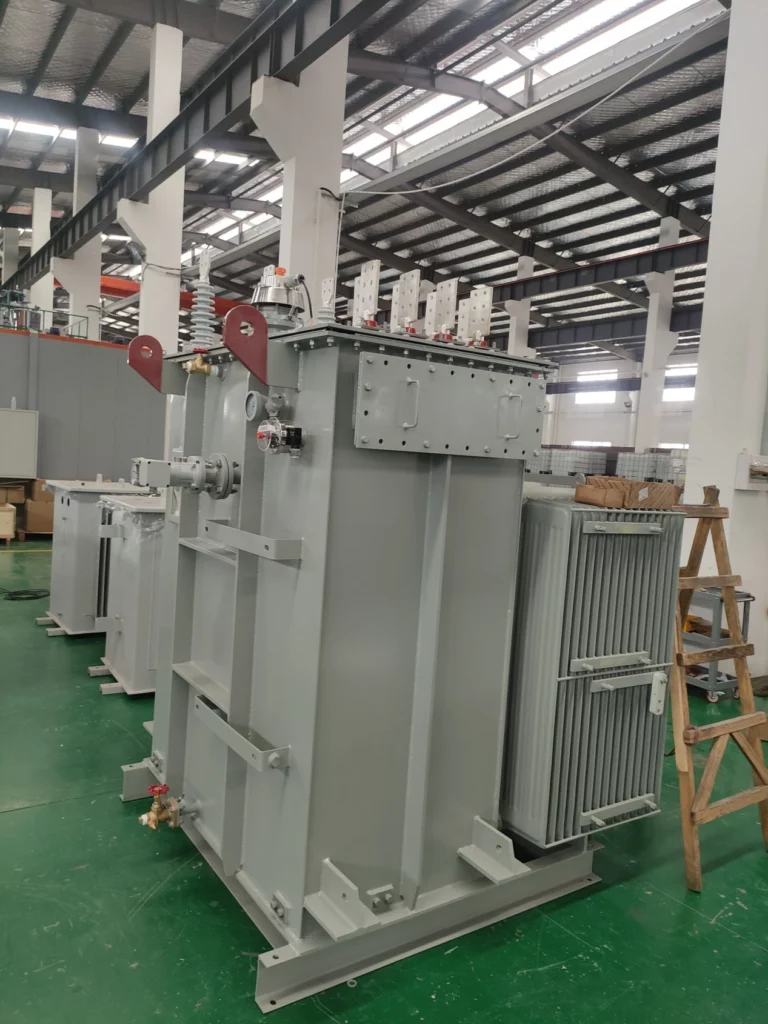
The capacity of the unit padmounted transformer shall be selected according to the rated apparent power of the wind turbine. The wind turbine should meet the power factor dynamically adjustable in the range of 0.95 to 0.95 lagging ahead.
The rated capacity of the padmounted transformer can be calculated as follows:

Where: S is the capacity of the padmounted transformer, kVA; P is the rated active power of the wind turbine, kW; cosφ is the power factor.
The cable conductors can be made of copper, aluminium or aluminium alloy; aluminium alloy conductors are not suitable for cables of voltage class 1 kV or above.
The main differences between copper, aluminium and aluminium alloy conductors are listed in Table 4.
Item | Copper conductor | Aluminium conductors | Aluminium |
Physical properties | better | General | better |
Mechanical properties | better | General | better |
Load capacity | Larger | General | fair |
Voltage drop | lower | General | Fair |
Reliability | higher | General | fair |
Density | larger | Fair | Lower |
Weight | heavier | Lighter | Lighter |
Engineering Installation | lighter | Fair | Fair |
Price | higher | Lower | Moderate |
It can be seen that although the aluminium conductor does not improve the conductivity of the aluminium conductor, its physical and mechanical properties such as bending, creep resistance and corrosion resistance have been greatly improved. Compared to copper conductors, aluminium conductors have certain advantages in terms of weight, price and engineering installation. The copper conductor still has obvious advantages in terms of current carrying capacity, voltage drop and reliability, and there is scope for all three to be used in different scenarios.
In order to achieve a reasonable lifetime for the conductors and insulation of the cable under normal operating conditions, conditional on the thermal effects generated during the duration of the current, the permissible load capacity of the conductors should be corrected for the way in which the cable is laid and the ambient temperature at the place where it is laid.
For the cross-sectional area of the protective earth conductor PE and the protective earth conductor PEN with neutral point, the following shall be implemented:
1) It shall be capable of meeting the conditions for automatic cut-off of the electrical system by indirect contact protection and of withstanding the expected earth fault current or short-circuit current.
2)The minimum cross-sectional area of the PE and PEN lines shall be calibrated for thermal stability through earth fault currents, and the calculated results shall be taken to the adjacent higher cross-sectional area if it is not the usual cross-sectional area.
A large wind farm in a wind power base, located in the Gobi plain, is designed for the installation of 23 4 500 kW wind turbines with an outlet voltage of 1.14 kV.
1) transformer for wind turbine: generally a pad mounted transformer (oil-immersed padmounted transformer) is used.
2) Rated capacity of the padmounted transformer: The rated capacity of the padmounted transformer is chosen to be 5 000 kVA, based on 1.1 times the rated active power of the wind turbine.
3) Energy efficiency class of the padmounted transformer: no-load losses not exceeding 4.64 kW, load losses not exceeding 34.2 kW.
4) Material of the power cable on the low-voltage side of the pad mounted transformer: from the point of view of reducing investment and considering the necessary physical and mechanical properties, a custom-made aluminium alloy power cable was chosen.
5) Number of power cables on the low-voltage side of the pad mounted transformer: 10 aluminium cables (conductor cross-section 300 mm2) are selected according to the rated load capacity of the aluminium conductors.
6)Calibration of the protective conductor cross-section: according to conventional experience, the minimum cross-sectional area of the protective conductor is generally 240 mm2 to meet the requirements.
1) padmounted transformer type: according to the actual needs of the construction scenario, the land acquisition area of the pad mounted substation is reduced, the pad mounted substation is arranged on the foundation bearing platform of the wind turbine, and a firewall is set up between the pad mounted substation and the wind turbine. Firewall between the pad mounted substation and the wind turbine.
2) Rated capacity of pad mounted transformer: According to the rated active power and power factor of the wind turbine, the calculated capacity of the pad mounted substation can be obtained as follows:

The rated capacity of the padmounted transformer is chosen to be 4 800 kVA.
3) Energy efficiency class of the padmounted transformer: according to the recommended energy efficiency class of the 35 kV oil-immersed three-phase double-winding non-excited voltage regulated power padmounted transformer, the following can be obtained by interpolation: no-load loss (class III) does not exceed 3.38 kW and load loss (class III) does not exceed 28.94 kW.
4) Material of the power cable on the low-voltage side of the pad mounted transformer: as the outlet voltage of the wind turbine exceeds 1 kV, aluminium alloy cables are not recommended; taking into account the actual needs and usage habits of the construction unit, copper-core power cables are finally chosen.
5) The number of power cables on the low-voltage side of the pad mounted transformer: according to the rated load capacity of the copper-core cable, a comprehensive correction factor was reasonably selected and the number of power cables on the low-voltage side of the pad mounted transformer was calculated to be 10 (conductor cross-section 240 mm2) or 9 (conductor cross-section 300 mm2). The final choice for the project was 10 copper-core cables of 240 mm2.
6) Calibration of the protective conductor cross-section: According to the design data of the access system, it is calculated that when a single-phase short-circuit fault occurs at the wind turbine outlet, the earth fault current on the low-voltage side of the pad mounted transformer is 23.08 kA. The time for the protective apparatus to automatically cut off the fault current is generally taken as 0.2 s, according to the low-speed circuit breaker.
The thermal stability coefficient of the grounding wire material is taken as 143. 72.18 mm2 is calculated as the minimum cross section of the protective conductor, and 1 x 120 mm2 neutral wire is finally used in the project.
Based on the comparison of the above two options, it is easy to see that the standard design option has the following advantages over the conventional design option:
1) Flexible determination of the padmounted transformer type according to actual requirements. pad mounted substation can be arranged on or outside the wind turbine’s bearing platform, and in case of insufficient fire distance, additional firewalls can be installed.
2) By reasonably reducing the capacity of the padmounted transformer, the investment in the padmounted transformer is minimised, with savings of around 5%.
3)By controlling the energy efficiency of the padmounted transformer, the economic operation of the padmounted transformer is ensured and the operating costs of the padmounted transformer are greatly reduced, with no-load losses reduced by approx. 27% and load losses reduced by approx. 15%.
4) Through technical and economic comparison of low-voltage power cables, the cross-sectional area of the cable is minimised to ensure that the conditions for power transmission are met, which generally reduces the cost by approximately 10% (40% for aluminium cables).
With the promotion and application of large-capacity wind turbines, the parameter requirements and manufacturing level of transformer for wind turbine are also increasing, combined with the actual scenario and working conditions in accordance with the standard design scheme, the wind turbine parameters, pad mounted substation arrangement, and equipment cost selection, in order to ensure the economy and reliability of the design scheme. and reliability.
The following issues should also be noted when designing and selecting wind turbine step-up transformers:
1) It is advisable to supervise the manufacture of the equipment to ensure that the quality of the product is controlled throughout the entire process.
2) The protective conductor has to pass through a zero-sequence unbalanced current, which generates eddy currents in the metal material of the armouring layer. The eddy current effect will accelerate the ageing of the cable insulation layer through the heating of the metal material, which will cause cable breakdown accidents in long time operation.
3) In recent years, the price of copper conductor cables has risen as the price of copper on the market has continued to rise. In new construction projects, pad mounted transformer connection cables can be considered using aluminium or aluminium alloy conductor cables.
Download Resource

Table of Contents Selecting the right pad-mounted transformer requires careful consideration of several critical
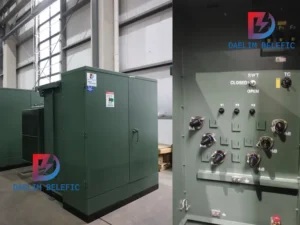
The primary function of the pad mounted transformer is to serve as a critical distribution
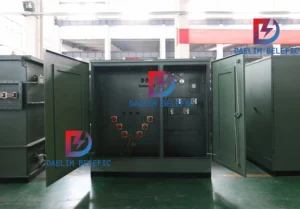
A pad mounted transformer operates through electromagnetic induction, serving as a crucial distribution component that